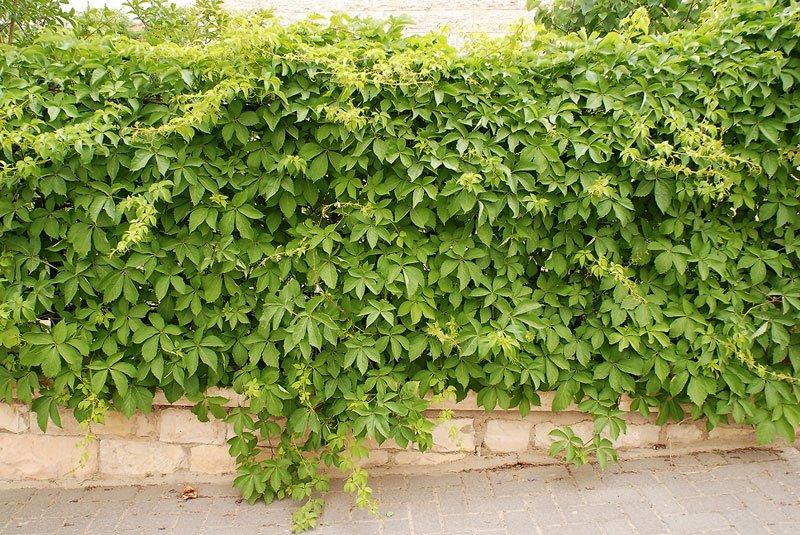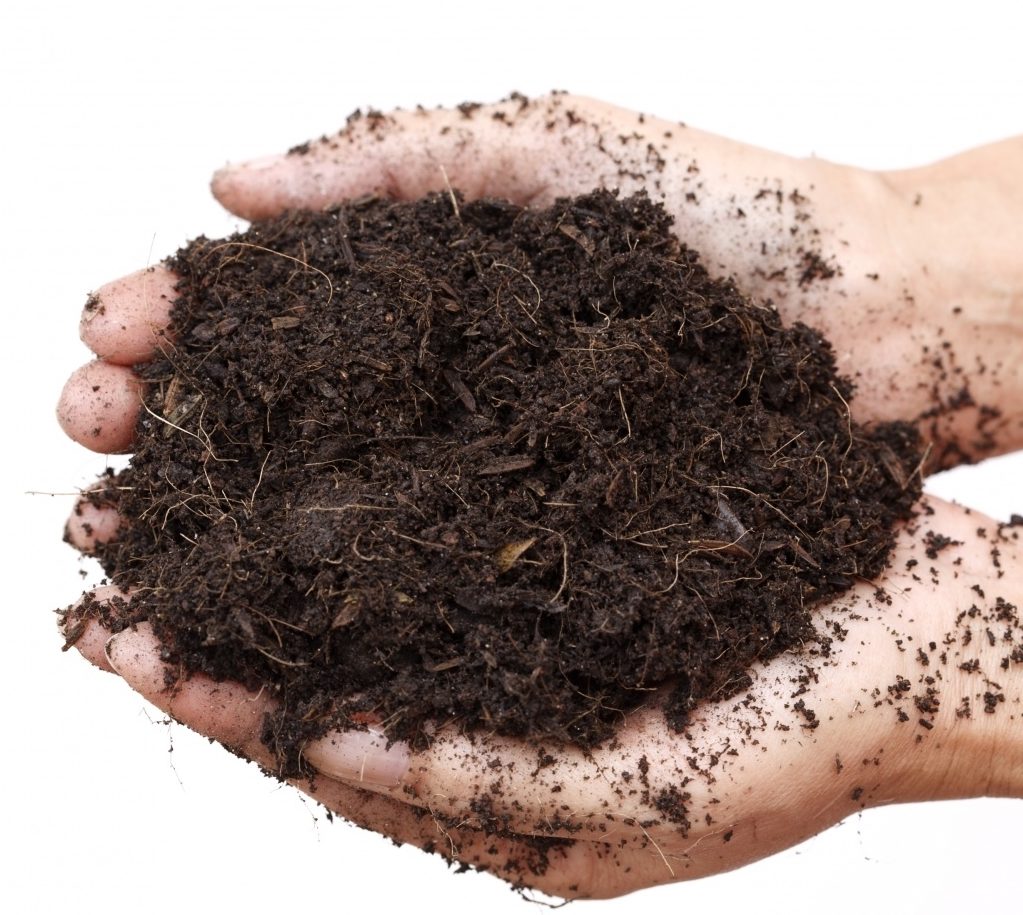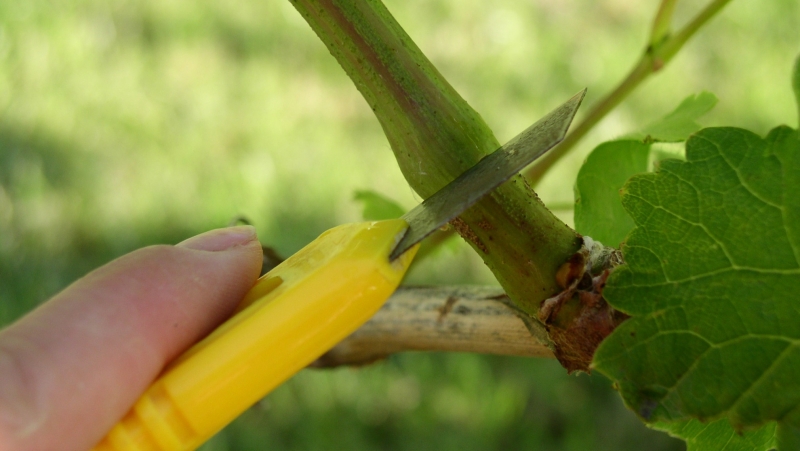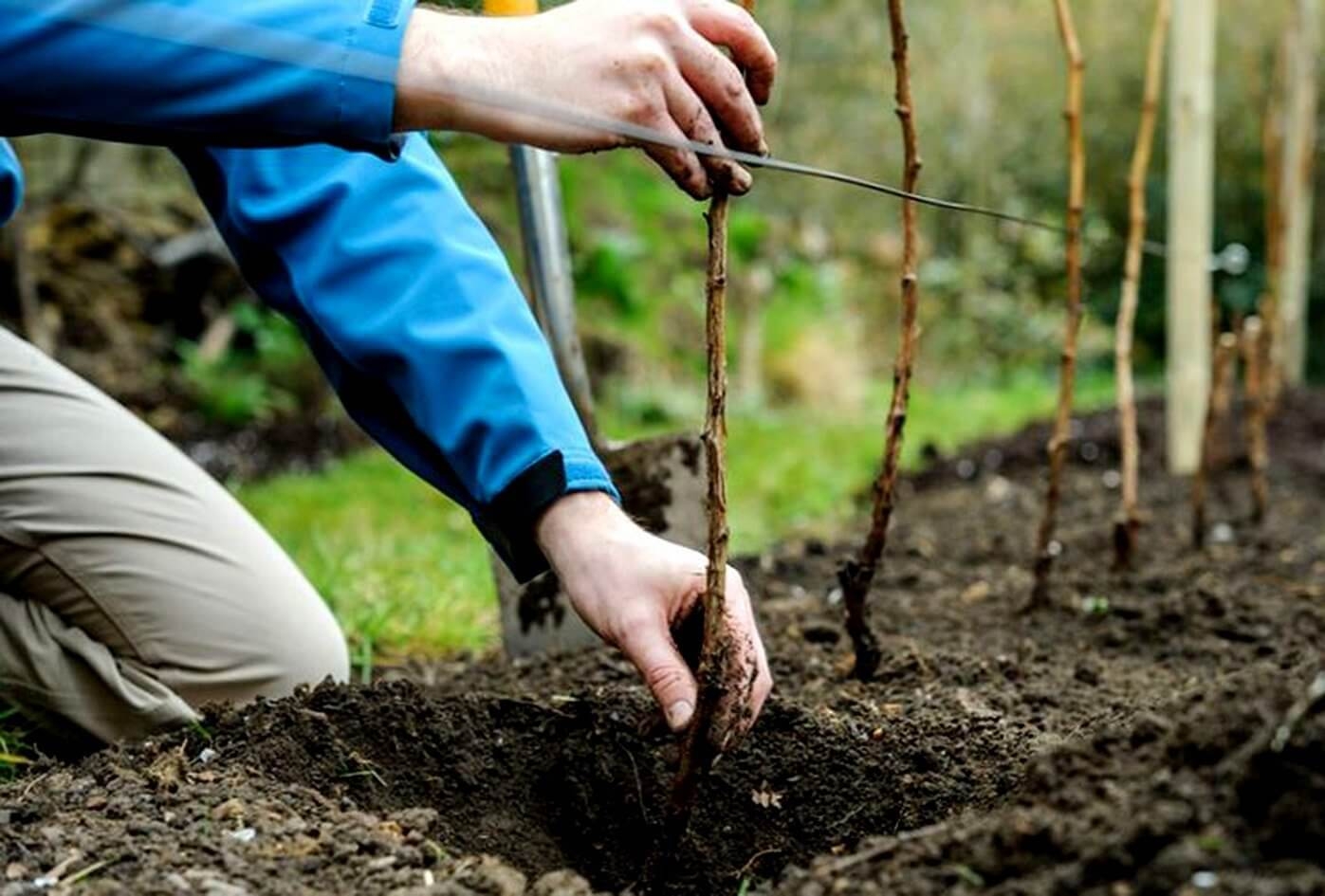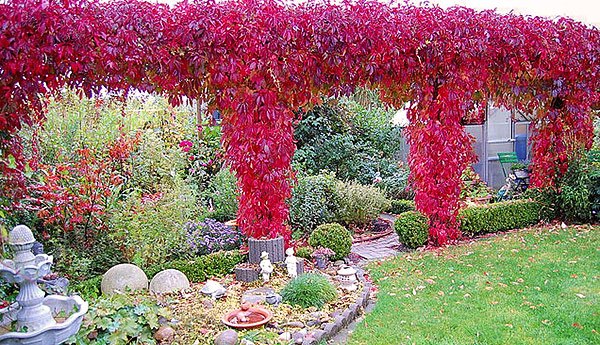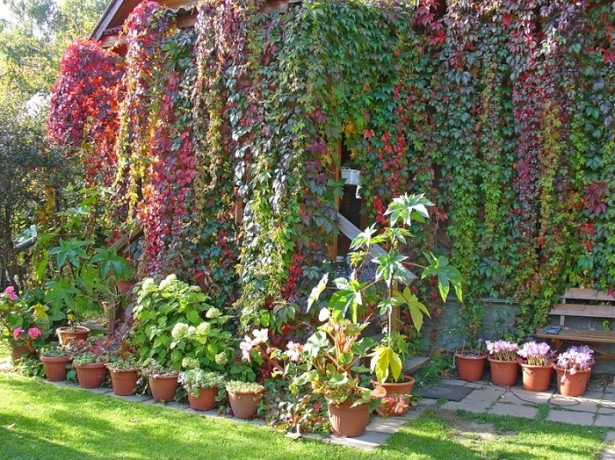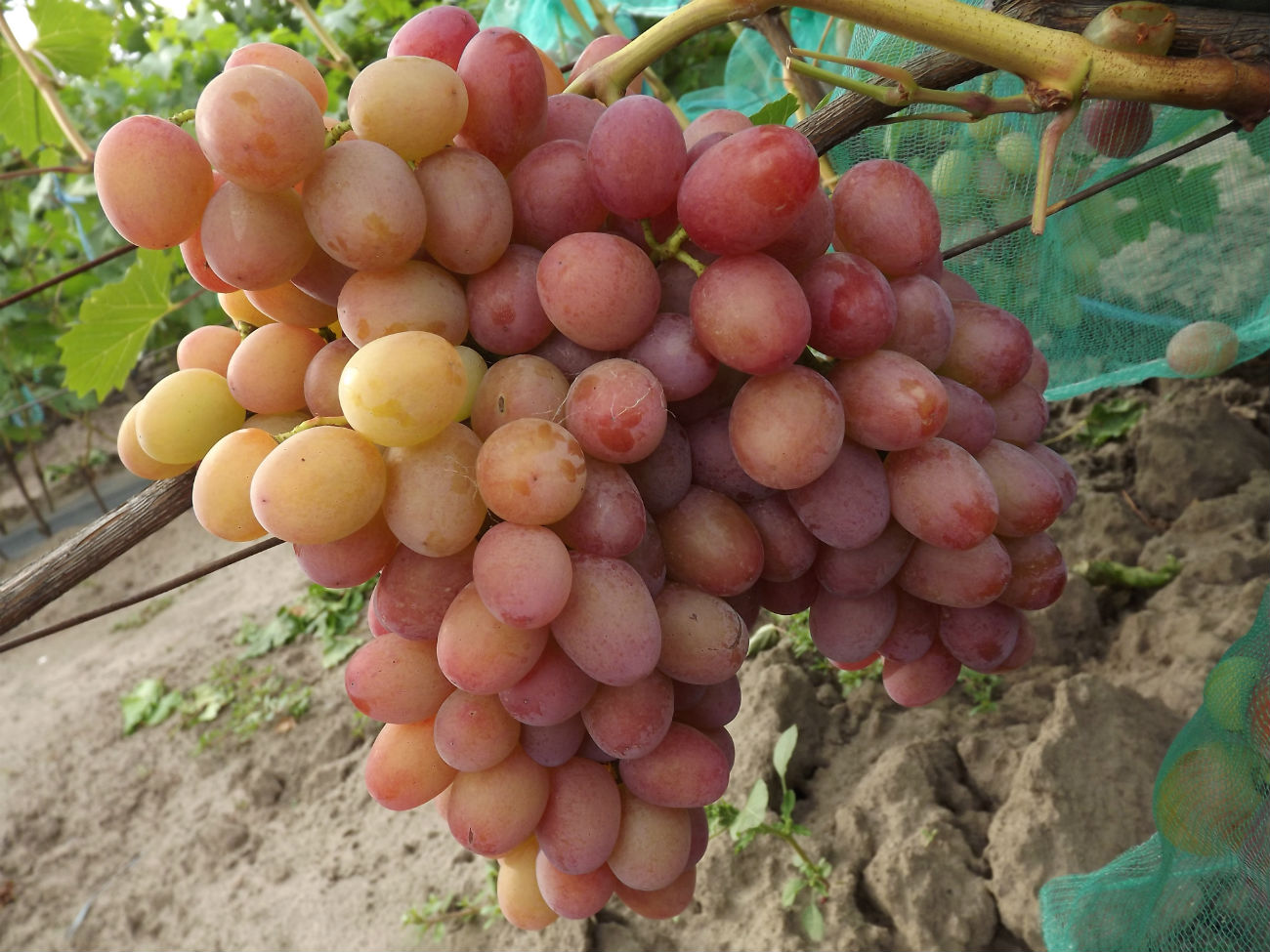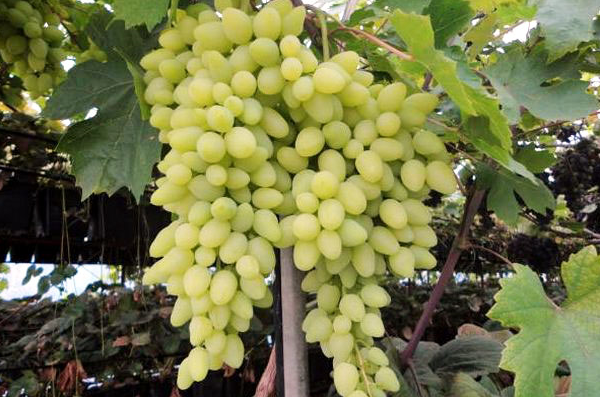Content:
Arranging a hedge on the site is a troublesome task, but it allows you to get a beautiful and inexpensive fence, divide the garden into zones without cluttering the common space. Depending on the choice of plants for a living fence, the whole appearance of the site will change.
A hedge well dampens loud sounds, is an obstacle for dust, reduces air pollution. Green plants with different shapes and sizes of foliage have a positive effect on mood and relieve stress.
The plants that make up a living fence should be constantly looked after: watered, cut. If there is no time or energy for this, it is better to refuse this type of hedge.
Girlish grapes as a fence
When picking up shrubs and vines for a fence, you should focus on plants that are unpretentious, fast-growing and respond well to a haircut. The grape hedge is very popular in our latitudes. Wild grapes on the fence perfectly exist in the Russian climate, do not require shelter for the winter, and can quickly build up green mass. Wild grapes form a spectacular, thick head of large carved greenery on the fence, needing only formative pruning.
The plant is not demanding on lighting, it can be grown from the shady side of the building.
The disadvantages of the vineyard as a fence include its low decorative value in winter. Fallen foliage exposes bare whips, which does not look aesthetically pleasing.
Site preparation
Planting the plant should be started in autumn, in September. This time is favorable for the development of a young plant, as the heat subsides.
A plot of any degree of illumination is suitable for a grape seedling. But it must be borne in mind that in the shade the plant develops slowly and in the fall the foliage will remain green. In a bright area, grapes grow quickly and in autumn they are painted in bright yellow, crimson and orange shades.
The optimal support for grape lashes is a metal mesh netting with large cells or a trellis with welded horizontal strips for every 50 cm of the post height. Plastic mesh, ropes and wooden supports are not suitable - they are short-lived. The height of the fence is determined by the gardener's preference. Grape vines that have reached the top are allowed horizontally to the sides or outweighed to the other side.
For planting, grape shoots are chosen, not older than two years, it is better to take one-year-old plants. For every 1.5-2 m. Of the length of the fence, take one seedling.
They dig a trench in the ground, the width of a shovel's bayonet, to a depth of 15-20 cm. Sand or gravel, gravel or expanded clay are poured at the bottom. The thickness of the drainage layer is enough 3-4 cm. Above it, sprinkle with humus mixed with garden soil and start planting.
Wild grapes on the fence: how to plant
- The seedling is immersed in the soil exactly as it grew before. The root collar is not covered.If the planting is carried out with a handle, then it is placed obliquely, deepening by 2 buds. It is important to compact the soil around the plant so that no voids remain in the soil.
- Plants are watered abundantly, spending up to 10 liters of water for each bush. So that water does not spill, bumpers of soil are created around the bushes.
- After watering, it is useful to mulch the surface of the earth with mown grass, sawdust, peat. Mulch from large wood bark, crushed stone looks decorative.
Before the onset of cold weather, it remains to monitor the moisture content of the soil, maintaining it in a slightly moist state.
Care
Grapes do not require shelter for the winter, only young bushes can be covered with soil or peat to a height of 15 cm.
In hot summer, planting requires watering. A warm shower is useful for foliage.
Fertilizing the grapes is not necessary. It is enough to mulch the soil under the plants with humus in the spring.
Broken shoots are trimmed twice a season, and excess branches are removed. For better bushiness of young plants, pinch the top of the central shoot when it reaches a height of one meter.
How to tie up girlish grapes
The main shoots extending from the stem of the plant are spread in the form of a fan along the net and fixed on it with ropes. Further, the grapes themselves will cling to the support, gradually braiding it entirely. The gardener only has to control the direction, blowing flexible branches in the right direction in time.
When the shoots outgrow the height of the fence, they are thrown to the other side or cut off. It is necessary to trim the plant several times per season. If this is not done, the grapes will quickly turn into a shapeless heap of tangled branches. The increased mass of greenery can break the supports and the entire structure will collapse to the ground.
Reproduction
At 4-5 years old, flowers and small clusters of inedible berries begin to appear on the grape plant. Wild grapes can propagate by seeds, cuttings, cuttings and shoots.
Grape seeds are sown before winter on a special garden bed with loose sandy soil. Distribute them at a distance of 10 by 10 cm, deepening by 5-8 mm. A seed sprout will appear in the spring, with the onset of heat. For at least a year, the crops are carefully looked after: weeds are weeded and watered. When the seedlings get stronger, they can be transplanted to a permanent place.
Cuttings are cut from young healthy branches of grapes in spring. At least 4 good large buds are left on each cuttings. The cuttings are kept for half an hour in a root-forming solution and planted in a permanent place or in containers for growing. Caring for them consists in regular watering.
Knowing how to plant girlish grapes for a hedge can make your site look nice and cozy without much hassle.
